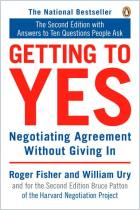Melden Sie sich bei getAbstract an, um die Zusammenfassung zu erhalten.

Melden Sie sich bei getAbstract an, um die Zusammenfassung zu erhalten.
William Ury
Getting to Yes with Yourself
And Other Worthy Opponents
Harper, 2015
Was ist drin?
Want to be a top negotiator? Before you meet with anyone else, first negotiate with yourself.
Recommendation
In this insightful guide to business and other negotiations, well-known negotiation specialist William Ury helps you interact more effectively in many areas of your life. Using entertaining, impressive anecdotes from high-profile conflicts he helped resolve, and sharing advice from noted psychologists and researchers, Ury takes you through his voyage of discovery. He asks, “How can we really expect to get to yes with others, particularly in challenging situations, if we haven’t first gotten to yes with ourselves?” And he explains that saying yes to yourself with compassion has to come before negotiating with others. In this prequel to his classic Getting to Yes, he walks you through six specific steps that will help you say yes to yourself: identify your motives; find alternative solutions; view problems in a new way; negotiate in a more dignified, empathic and caring fashion, and increase your value as a person. getAbstract finds that Ury’s expertise will help anyone who wants to grow, get more from life and have more satisfying interactions.
Summary
About the Author
One of the world’s best-known experts on negotiation, William Ury is the co-author of Getting to Yes and the author of Getting Past No and The Power of a Positive No. Ury co-founded Harvard’s Program on Negotiation, where he is a Distinguished Fellow.





















Comment on this summary